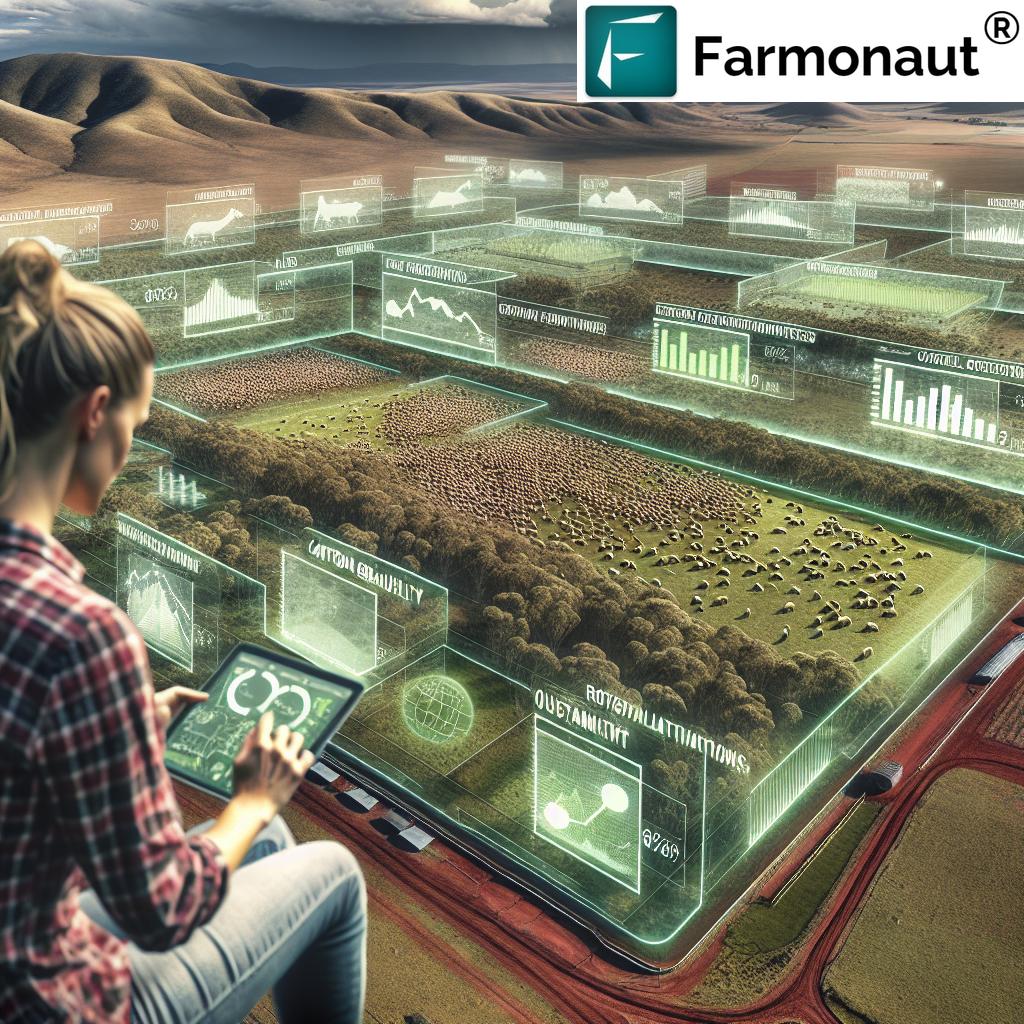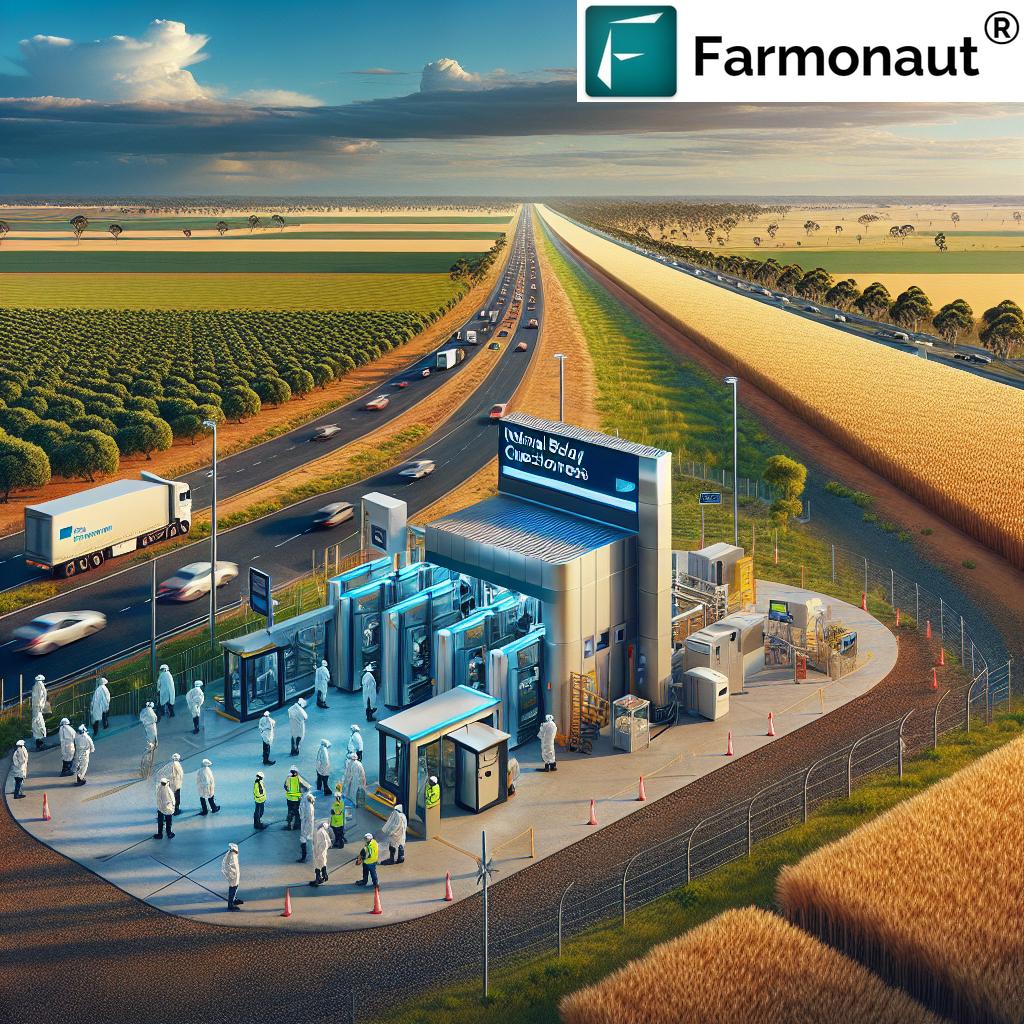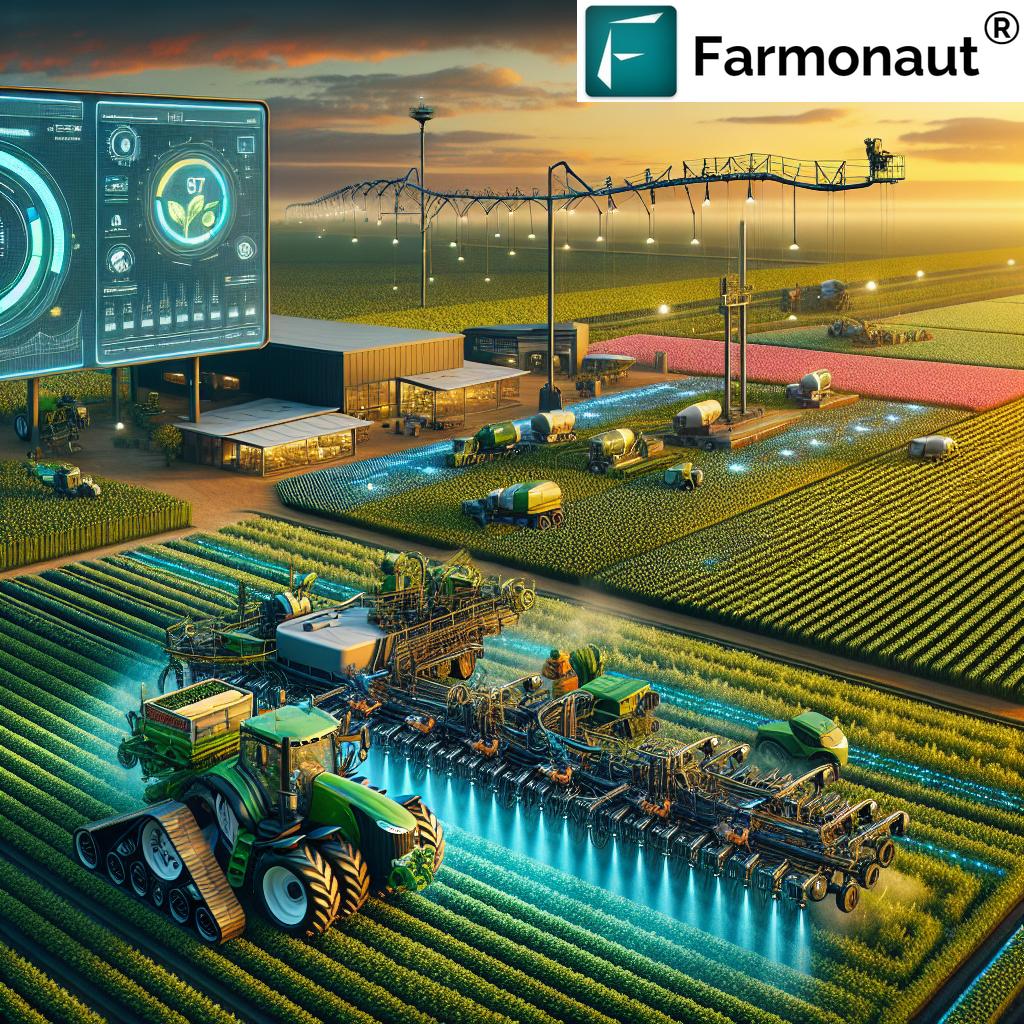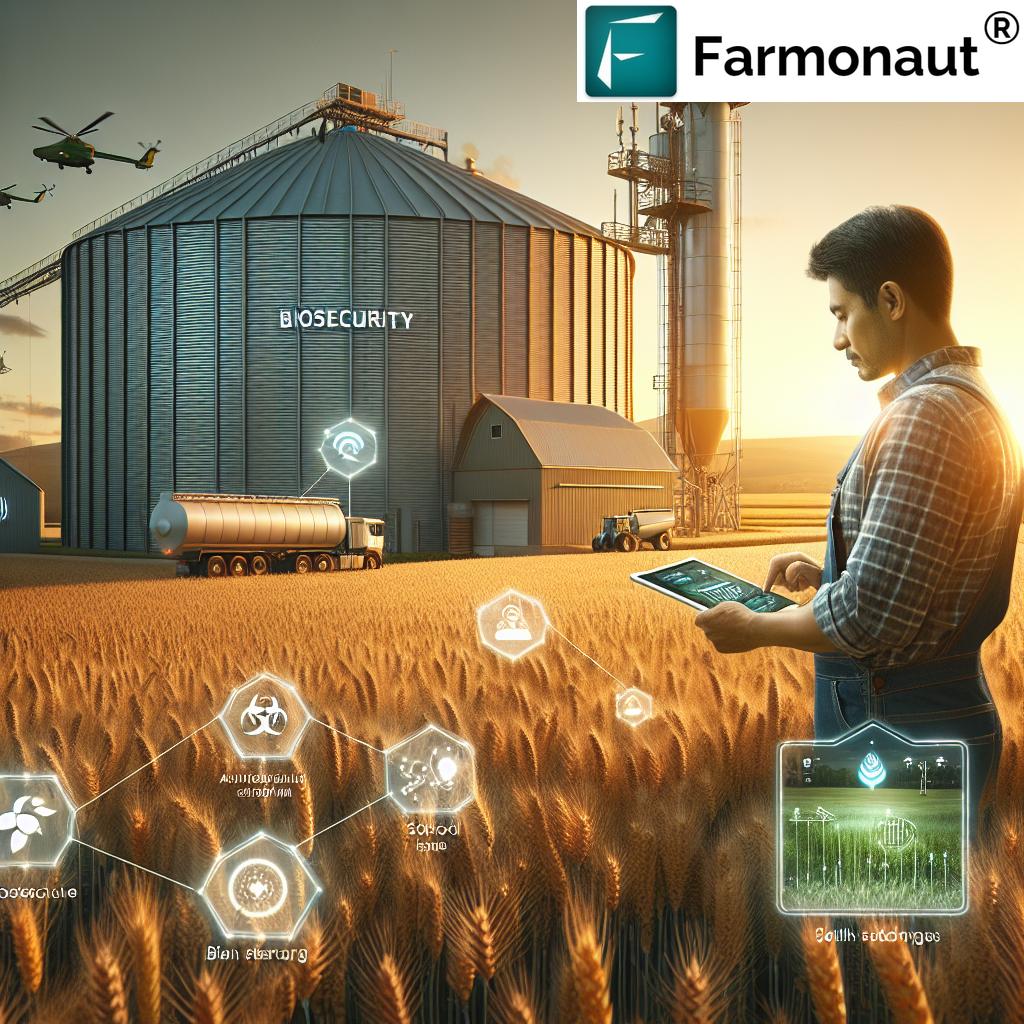Revolutionizing Australian Agriculture: How Digital Farm Records Boost Sustainability and Profitability
“Digital farm records can increase transparency and efficiency in carbon projects by up to 40% compared to traditional methods.”
In the vast landscapes of Australia, where agriculture plays a pivotal role in the nation’s economy and identity, a quiet revolution is taking place. Digital farm records and carbon sustainability in agriculture are transforming the way we approach sustainable ranching practices, ushering in an era of unprecedented efficiency, transparency, and environmental stewardship. As we delve into this transformative journey, we’ll explore how the digitization of grazing records is not just a technological upgrade but a fundamental shift in how we manage our land, our livestock, and our future.
The Dawn of Digital Farm Records in Australian Agriculture
Australia’s agricultural sector has long been known for its resilience and innovation. However, the challenges of climate change, market volatility, and increasing global demand for sustainable products have pushed our farmers and ranchers to seek new solutions. Enter digital farm records – a game-changing tool that’s reshaping the landscape of Australian agriculture.
Digital farm records represent a comprehensive system for tracking, analyzing, and optimizing every aspect of farm operations. From grazing patterns and livestock health to crop yields and resource management, these digital solutions offer a level of insight and control that was previously unimaginable. But why are they so crucial, especially in the context of carbon sustainability?
- Enhanced Accuracy: Digital records eliminate human error in data collection and analysis.
- Real-Time Insights: Farmers can make informed decisions based on up-to-the-minute data.
- Sustainability Tracking: Easy monitoring of carbon footprint and implementation of eco-friendly practices.
- Compliance Simplification: Streamlined reporting for carbon projects and regulatory requirements.
As we embrace these digital tools, we’re not just improving our farms; we’re paving the way for a more sustainable and profitable agricultural future.

The Critical Role of Digitized Grazing Records in Carbon Projects
For ranchers participating in carbon projects, the shift to digital grazing records is not just beneficial – it’s essential. Traditional record-keeping methods, while time-honored, often fall short in providing the level of detail, accuracy, and accessibility required for modern carbon sustainability initiatives. Let’s explore why digitizing these records is so crucial:
- Data Accuracy and Reliability: Digital systems minimize human error, ensuring that every grazing event, livestock movement, and pasture rotation is recorded with precision.
- Real-Time Monitoring: Ranchers can track grazing patterns and make immediate adjustments to optimize land use and reduce overgrazing.
- Comprehensive Reporting: Digital records facilitate easy compilation of data for carbon project reporting, streamlining the verification process.
- Historical Analysis: Access to years of detailed grazing data allows for long-term trend analysis and informed decision-making.
By embracing digital tools for livestock management, Australian ranchers are not only aligning with global sustainability goals but also positioning themselves at the forefront of climate-smart agriculture.
The Shortcomings of Traditional Record-Keeping in Modern Agriculture
While traditional record-keeping methods have served farmers well for generations, they’re increasingly inadequate in the face of modern agricultural challenges, especially when it comes to carbon sustainability in agriculture. Here’s why:
- Time-Consuming: Manual record-keeping is labor-intensive, taking valuable time away from other farm operations.
- Prone to Errors: Handwritten records can be misplaced, damaged, or misinterpreted.
- Limited Analysis Capabilities: It’s challenging to identify trends or patterns from paper records.
- Difficulty in Sharing: Collaborating with project developers or auditors becomes cumbersome with physical records.
- Lack of Real-Time Insights: Traditional methods don’t provide immediate data for quick decision-making.
These limitations highlight the urgent need for digital solutions that can keep pace with the demands of modern sustainable farming practices.
Four Key Steps to Effectively Digitize Ranch Operations
Transitioning to digital farm records is a journey that requires careful planning and execution. Here are four essential steps to effectively digitize your ranch operations:
- Select the Right Digital Tools:
- Choose a platform that’s user-friendly and tailored to livestock management.
- Ensure the system can integrate with other farm management tools you may be using.
- Look for solutions that offer mobile accessibility for on-the-go data entry and analysis.
- Train Your Team:
- Provide comprehensive training to all staff members who will be using the digital system.
- Emphasize the importance of consistent and accurate data entry.
- Encourage feedback and address any concerns or challenges during the transition period.
- Implement Data Migration:
- Carefully transfer historical data from paper records to the digital system.
- Verify the accuracy of migrated data to ensure continuity in record-keeping.
- Establish a system for backing up digital records to prevent data loss.
- Leverage Data for Sustainability Reporting:
- Use the digital platform to generate comprehensive reports for carbon projects.
- Analyze data to identify areas for improving sustainable practices.
- Regularly review and update your sustainability goals based on the insights provided by your digital records.
By following these steps, ranchers can smoothly transition to digital record-keeping, enhancing their ability to participate in carbon projects and improve overall farm sustainability.
“Implementing digital grazing records can help ranchers reduce their carbon footprint by 15-20% while improving productivity.”
Enhancing Transparency and Efficiency through Digital Solutions
The adoption of digital farm records significantly enhances transparency and efficiency in agricultural operations, particularly for those involved in carbon projects. Here’s how:
- Data Sharing: Digital records facilitate secure and easy sharing of data with project developers, auditors, and other stakeholders.
- Real-Time Updates: Stakeholders can access up-to-date information on farm practices and carbon sequestration efforts.
- Automated Reporting: Generate comprehensive reports with a few clicks, saving time and reducing the likelihood of errors.
- Blockchain Integration: Some digital solutions use blockchain technology to ensure data integrity and traceability.
These features not only streamline operations but also build trust among participants in carbon marketplaces, potentially leading to better opportunities and pricing for carbon credits.

Implementing Climate-Smart Agricultural Practices with Digital Support
Digital farm records are instrumental in implementing and monitoring climate-smart agricultural practices. These practices aim to increase productivity while reducing greenhouse gas emissions and enhancing resilience to climate change. Here’s how digital tools support this transition:
- Precision Grazing Management: Use data to optimize grazing patterns, reducing overgrazing and promoting carbon sequestration in soil.
- Resource Efficiency: Monitor water and feed usage to minimize waste and reduce the farm’s overall carbon footprint.
- Soil Health Monitoring: Track soil organic matter and implement practices to improve soil carbon content.
- Emissions Tracking: Accurately measure and monitor greenhouse gas emissions from livestock and farm operations.
By leveraging digital tools, farmers can make data-driven decisions that not only benefit the environment but also improve farm productivity and profitability.
The Role of Farmonaut in Revolutionizing Australian Agriculture
In the landscape of digital agricultural solutions, Farmonaut stands out as a pioneering force, offering advanced, satellite-based farm management solutions. Their technology is particularly relevant for Australian farmers looking to optimize their operations and participate in carbon sustainability projects.
Farmonaut’s platform integrates several key features that align perfectly with the needs of modern, sustainability-focused agriculture:
- Satellite-Based Crop Health Monitoring: Real-time insights into vegetation health, soil moisture, and other critical metrics.
- AI-Driven Advisory System: Personalized recommendations for crop management and resource optimization.
- Carbon Footprint Tracking: Tools to monitor and reduce environmental impact, crucial for carbon project participation.
- Blockchain-Based Traceability: Ensuring transparency and security in agricultural supply chains.
These features empower Australian farmers to make data-driven decisions, improve their sustainability practices, and effectively participate in carbon markets.
Explore Farmonaut’s solutions:
Optimizing Pasture Management with Digital Tools
Effective pasture management is crucial for sustainable ranching, and digital tools are revolutionizing this aspect of farm operations. Here’s how digital solutions are helping Australian ranchers optimize their pasture management:
- Remote Monitoring: Satellite imagery and drone technology allow for real-time assessment of pasture conditions without physical inspection.
- Data-Driven Rotation: Digital records help plan optimal grazing rotations, ensuring even pasture utilization and recovery.
- Predictive Analytics: AI-powered tools can forecast pasture growth based on weather data and historical patterns.
- Stocking Rate Optimization: Digital systems help determine the ideal number of livestock for each pasture, preventing overgrazing.
By leveraging these digital tools, ranchers can significantly improve pasture health, increase carrying capacity, and contribute to carbon sequestration efforts.
Aligning with Global Sustainability Goals
The adoption of digital farm records in Australian agriculture is not just a local trend; it’s part of a global movement towards sustainable farming practices. By embracing these technologies, Australian farmers are aligning themselves with international sustainability goals and standards:
- UN Sustainable Development Goals: Digital farm management directly contributes to goals related to responsible consumption and production, climate action, and life on land.
- Global Carbon Markets: Accurate digital records are essential for participation in international carbon credit schemes.
- Sustainable Supply Chains: Digital traceability meets the growing global demand for sustainably sourced agricultural products.
- Climate Resilience: Data-driven farming practices help adapt to and mitigate the effects of climate change.
By adopting digital solutions, Australian farmers are not only improving their own operations but also contributing to global efforts in sustainable agriculture.
The Economic Benefits of Digital Farm Records
While the environmental benefits of digital farm records are clear, the economic advantages are equally compelling. Australian farmers adopting these technologies are seeing significant improvements in their bottom line:
- Increased Efficiency: Automation of record-keeping tasks saves time and labor costs.
- Resource Optimization: Data-driven decisions lead to more efficient use of water, feed, and other inputs.
- Improved Yield: Precise management of crops and livestock results in higher productivity.
- Access to Premium Markets: Sustainable practices, verified by digital records, can open doors to high-value markets.
- Carbon Credit Revenue: Accurate digital records facilitate participation in carbon credit programs, creating a new revenue stream.
These economic benefits make the transition to digital farm records not just an environmental choice, but a smart business decision for Australian farmers.
Overcoming Challenges in Digital Adoption
While the benefits of digital farm records are numerous, the transition can present challenges for some farmers. Here are some common hurdles and strategies to overcome them:
- Technical Learning Curve: Provide comprehensive training and ongoing support to ease the transition.
- Initial Investment: Consider the long-term ROI and explore government grants or subsidies for digital agriculture initiatives.
- Data Privacy Concerns: Choose platforms with robust security measures and clear data protection policies.
- Internet Connectivity: Explore offline-capable solutions or invest in improving on-farm connectivity.
- Resistance to Change: Start with small, manageable changes and gradually expand digital integration as comfort levels increase.
By addressing these challenges head-on, Australian farmers can smoothly transition to digital systems and reap the full benefits of modern farm management.
The Future of Digital Farm Records in Australian Agriculture
As we look to the future, the role of digital farm records in Australian agriculture is set to expand even further. Here are some trends and developments we can expect:
- Integration of IoT Devices: Increased use of sensors and connected devices for real-time data collection.
- Advanced AI and Machine Learning: More sophisticated predictive models for crop yields, livestock health, and market trends.
- Blockchain for Traceability: Wider adoption of blockchain technology to ensure transparent and secure supply chains.
- Drone Technology: Expanded use of drones for precise field mapping and crop monitoring.
- Virtual and Augmented Reality: VR and AR tools for visualizing farm data and training farm workers.
These advancements will further enhance the capabilities of digital farm records, making Australian agriculture more efficient, sustainable, and competitive on the global stage.
Comparison: Traditional vs. Digital Farm Record-Keeping Methods
| Aspect | Traditional Methods | Digital Methods |
|---|---|---|
| Data Accuracy | Prone to human error and inconsistencies | High accuracy with automated data collection |
| Time Efficiency | Time-consuming manual entry and analysis | Quick data entry and real-time analysis |
| Data Accessibility | Limited to physical location of records | Accessible from anywhere with internet connection |
| Sustainability Reporting | Time-consuming, prone to errors | Automated, real-time data collection, accurate reporting |
| Carbon Footprint Tracking | Difficult to track and calculate accurately | Precise tracking and calculation with integrated tools |
| Compliance with Carbon Projects | Challenging to meet detailed reporting requirements | Streamlined compliance with automatic report generation |
| Cost-Effectiveness | Low initial cost, high long-term labor costs | Higher initial investment, significant long-term savings |
| Data Security | Vulnerable to physical damage or loss | Secure cloud storage with backup and encryption |
| Integration with Other Farm Systems | Limited integration capabilities | Seamless integration with various farm management tools |
| Scalability | Difficult to scale as farm operations grow | Easily scalable to accommodate farm growth |
Conclusion: Embracing the Digital Revolution in Australian Agriculture
As we’ve explored throughout this post, the adoption of digital farm records is not just a technological upgrade – it’s a fundamental shift in how we approach agriculture in Australia. From enhancing sustainability and profitability to aligning with global environmental goals, digital solutions are reshaping the future of farming.
The benefits are clear: increased efficiency, improved decision-making, enhanced transparency, and the ability to participate effectively in carbon markets. While challenges exist, the long-term advantages far outweigh the initial hurdles.
As Australian farmers, it’s crucial that we embrace this digital revolution. By doing so, we’re not only securing the future of our own operations but also contributing to a more sustainable and resilient agricultural sector for generations to come.
The journey towards fully digitized farm management may seem daunting, but with the right tools and support, it’s a journey well worth taking. As we move forward, let’s continue to innovate, adapt, and lead the way in sustainable agriculture. The future of Australian farming is digital, and that future starts now.
Frequently Asked Questions (FAQ)
- Q: What are the main benefits of digital farm records for Australian farmers?
A: Digital farm records offer improved accuracy, real-time insights, enhanced sustainability tracking, and simplified compliance with carbon projects. They also increase efficiency, optimize resource use, and can lead to better decision-making. - Q: How do digital records contribute to carbon sustainability in agriculture?
A: Digital records enable precise tracking of carbon footprints, facilitate participation in carbon credit programs, and support the implementation of climate-smart agricultural practices through data-driven decision-making. - Q: What challenges might farmers face when transitioning to digital record-keeping?
A: Common challenges include the initial learning curve, upfront costs, concerns about data privacy, and potential issues with internet connectivity in remote areas. However, these can be overcome with proper training, support, and strategic implementation. - Q: How can digital farm records improve profitability?
A: Digital records can boost profitability by increasing operational efficiency, optimizing resource use, improving yield through data-driven decisions, enabling access to premium markets, and creating new revenue streams through carbon credit programs. - Q: Are digital farm records suitable for all sizes of farms?
A: Yes, digital farm records can be scaled to suit farms of all sizes. Many platforms offer flexible solutions that can be adapted to the needs of small family farms as well as large commercial operations.
















